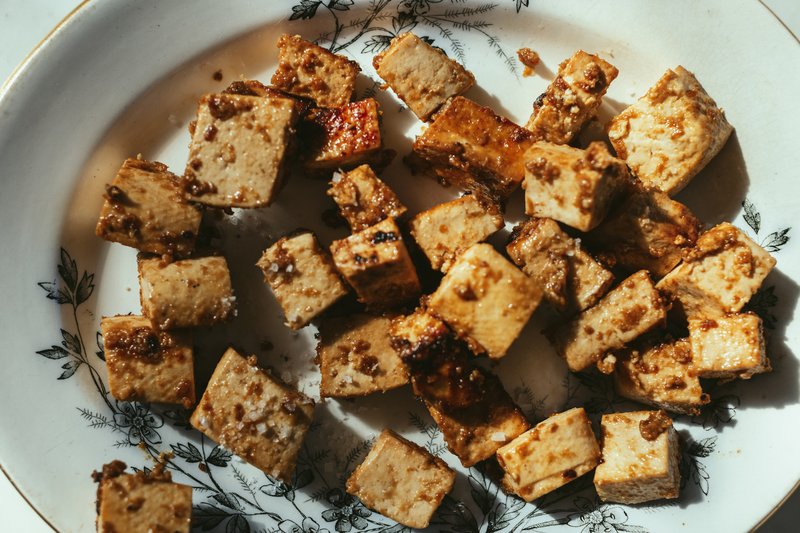Few of us are probably aware that sixty percent of emerging infectious diseases, such as Zika, Malaria, or the CoVID-19 are zoomorphic, and have long been suspected to go hand in hand with biodiversity depletion and land-use change, including deforestation. This in-depth article published over on National Geographic is a passionate read covering the link between deforestation and viruses. At the same time, we regularly witness bold statements on how vegetarians and vegans are responsible for global warming through deforestation, because of their tofu consumption. So we can’t help but wonder, is tofu consumed by humans really accountable for man-made forest depletion?
The link between tofu, livestock and deforestation
Tofu is made from soy beans. The overall popularity of soy beans comes from their high protein level and their abundance of oil—more than any other legume. Therefore, soy beans are an excellent food supply for livestock and a significant source for vegetable oils and biofuels.
The strongest driver of soy production remains animal feed with low-grade soy bean demand predicted to keep increasing, well before biodiesel production. However only 6% of soy beans are used for human consumption. As a matter of fact, healthy food-grade soy beans demand is steady, and projected to be likewise over the next few years.
Consequently, improving yield production has not been sufficient to keep up with demand for livestock and biofuels over the years; so most of that demand was met by expanding soy bean cultivation in new areas, such as tropical forests. For that reason, according to the UCSUSA soy bean production is one of the four major drivers of widespread deforestation, responsible for global warming, and the displacement of small farmers and indigenous communities over the planet. In addition, soy beans are one of the top three GMO crops in the US, the main producer in the world; Brazil and Argentina ranking respectively second and third. In these Latin American countries, the harmful consequences of large scale industrial soy production are global.
Critical issues started twenty years ago with tropical forest soils becoming viable for soy bean crop, granted by advances in farming methods and different crop varieties—making possible the soy bean growth in tropical conditions. Large areas from the Amazonian forest were targeted to source new land for soy bean production. That was until public outrage raised in the early 2000s, leading to the transnational Amazon Soy Moratorium—a direct ban of soy conversion in the Amazon forest after 2006. And while successful regarding conservation, this agreement, unfortunately, does not cover the entire biome of the Amazonia. Nowadays, other regions far from the lush jungle are victims of deforestation. Major carbon reservoirs from the Gran Chaco in Argentina to the Cerrado in Brazil, along with areas in Paraguay and Bolivia, where environmental protections and regulations are fewer than in Brazil. This mass deforestation releases millions of tonnes of greenhouse gas into the atmosphere, accelerating global warming and so climate change. Led by the trade group The Roundtable on Responsible Soy, a movement is pushing to set higher-than-market standards for the production of soy. However, as of 2013, these efforts only covered about 1% of Brazil’s total production.
So what can we do about that? To begin with, challenge the public’s perception of soy—end conversations holding vegetarians and vegans responsible for global warming because of their tofu consumption. Quite the opposite, soy bean production shaped for the livestock industry is what makes soy a controversial crop. Otherwise, as someone following a plant-based diet, the few things you can take responsibility for is your soy consumption. After animal product intake, there are two other important points to be vigilant about. First is how your soy is processed, always choose organic soy beans instead of conventional or natural to avoid the risk of soy bean production processes involving petrochemical solvent. Then be aware of where manufacturers source their soy beans, checking it is GMO-free, not extracted from rainforest regions, part of a crop-rotation system, and as local as possible. In New Zealand, this remains challenging, if not impossible. Focusing on the aspects of where your food comes from or how it has been transformed plays an essential role in reducing climate change effects. At the end of the day, caring about your food is caring for the environment.
And in the meantime some inspiration for cooking delicious tofu meals at home—these poke bowls here and chilli tofu and noodles here.




